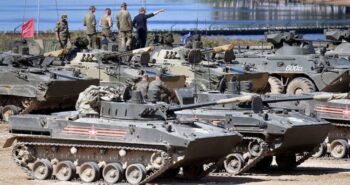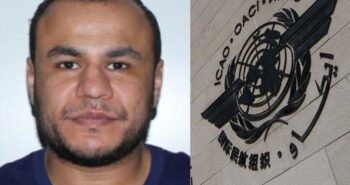By Bennett Seftel
More than six years after the Arab Spring reverberated across the Middle East and North Africa, the Libyan people still face a seemingly insurmountable challenge of piecing their fractured country back together.
Warring militias and an expanding terrorist threat have wreaked havoc on the country. Libya’s two most prominent leaders who represent competing factions, Fayez Sarraj, the head of Libya’s UN-brokered Government of National Accord (GNA), and Field Marshall Khalifa Haftar, the head of the Libyan National Army, recently agreed to a countrywide ceasefire and to hold presidential elections in early 2018 during a July 25 meeting with French president Emmanuel Macron in Paris. But the path towards reconciliation in Libya remains elusive.
This was the second time that Sarraj and Haftar met in the last three months, having gotten together in Abu Dhabi in May. While in Paris, the rival leaders acknowledged that only a political solution would end Libya’s civil war and that all militias in the country must be brought under the reins of a national army controlled by the government.
However, the agreement has serious shortcomings. The ceasefire doesn’t address the issue of combatting terrorist groups, which leaves both sides free to determine “legitimate” targets. Furthermore, the arrangement fails to specify a date for proposed new elections, leaving many wondering what, if anything, was actually achieved in Paris. Ultimately, this pact may end up being categorized among the previous peace deals struck in the years since the 2011 ousting of Libyan strongman Muammar Gaddafi that have not been honored and failed to produce tangible progress.
Turmoil in Libya began after Gaddafi was driven from power and killed in a 2011 uprising. The country was subsequently governed by a rebel leadership council, the National Transitional Council (NTC), which in August 2012, transferred authority to an elected body called the General National Congress (GNC).
In June 2014, voters chose to replace the GNC with a new parliament known as the House of Representatives (HoR), but the results were disputed and ensuing events led to the formation of two rival governments – the GNC based in Tripoli in western Libya and the HoR headquartered in Tobruk in eastern Libya.
To help resolve Libya’s political predicament, the UN helped create the GNA in December 2015, also based in Tripoli and headed by Sarraj, to serve as Libya’s official government. But the GNA has since faced opposition primarily from the Tobruk government, which is supported by the Haftar-led LNA.
For some time, regional and Western powers have been pushing Sarraj and Haftar to come to the negotiating table, but to date, there has been international reluctance to give Haftar a political role in a Sarraj-led government. The territorial gains of Haftar’s forces, however, have rendered that an increasingly untenable position, and consequently, it is likely that Haftar, at the very least, would seek to be named commander of Libya’s national armed forces. It is also expected that Haftar will run in the country’s upcoming 2018 presidential elections.
According to Geoff Porter, President of North Africa Risk Consulting, the deal signed between Sarraj and Haftar in July “ultimately ends up empowering a general with dictatorial ambitions.”
“One party to the ceasefire, Sarraj and the GNA, have no power in Libya. Sarraj can barely travel within Tripoli let alone throughout the country,” explains Porter.
“As for Haftar, he is always looking for opportunities to burnish his credentials internationally. Being feted in Paris by the French president goes a long way toward recasting him as a statesman rather than an aspiring strongman, which is effectively what he is,” Porter says.
Libya’s political stalemate has paved the way for Haftar’s forces to rapidly gain ground and momentum. In early July, Haftar announced that the LNA had finally taken control of Benghazi after more than three years of fighting, further cementing his position of strength.
In addition to Libya’s political and military battlegrounds, another factor in the Libyan conflict is the country’s oil industry, which was a key driver of the Libyan economy during Gaddafi’s regime pumping out 1.6 million barrels per day but fell into disarray following his overthrow. It took years for Libya’s oil sector to get back on track and finally, this July, Libya’s oilfields pumped a four year high of 1.02 million barrels a day and the country also reached a three year high in oil exports, according to data compiled by Bloomberg.
But last week, a militia group demanding more fuel supplies and better economic conditions for Libya’s northwestern Zintan region blockaded oil pipelines and closed down three oilfields, including the Sharara oilfield, the country’s largest, which was producing 280,000 barrels per day. Libya’s central bank warned that these disruptions had cut production by nearly 350,000 barrels a day, amplifying the country’s economic predicament, and that frequent clashes and oilfield shutdowns over the past three years have cost Libya more than $160 billion.
Until this recent development, the revival of Libya’s oil industry offered a ray of hope for Libya’s economic and political outlook. In fact, former U.S. Special envoy for Libya, Jonathan Winer, told The Cipher Brief that the framework of Libya’s oil industry may provide a roadmap for political compromise.
“Libyans could decide that the country is best off relying more on technocrats to run things and narrowing the work of politicians to a few major issues such as adopting a budget, agreeing on how to proceed with building national security institutions, and how to end the role of the militias, and other similar issues requiring political directions,” said Winer.
There is also the issue of a mass number African and Middle Eastern migrants flowing into Libya and attempting to traverse the Mediterranean Sea in hopes of reaching Europe’s shores. Libya’s navy, in coordination with Italy, has worked to intercept boats transporting migrants, and this week, Sarraj joined African and EU leaders in Paris to discuss how to contain the crisis more effectively.
Overall, while the meeting between Sarraj and Haftar provided an opportunity for the two leaders to talk face-to-face, they were unable to deliver a viable solution that would pull Libya from the depths of war, other than a feeble promise to hold a presidential election in 2018.
***
Bennett Seftel is the deputy director of analysis at The Cipher Brief.
____________




